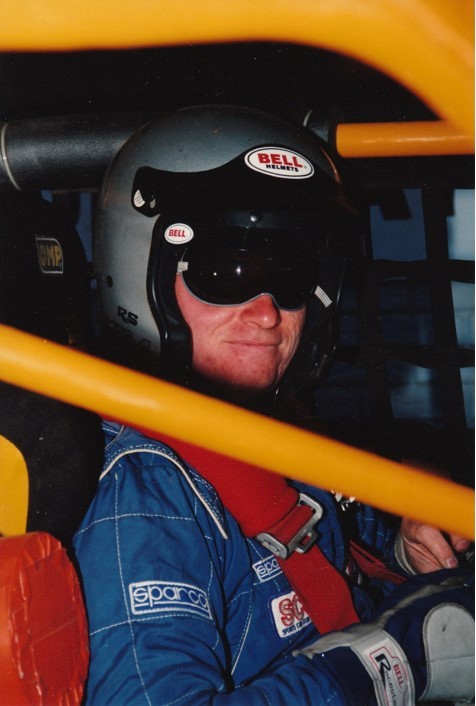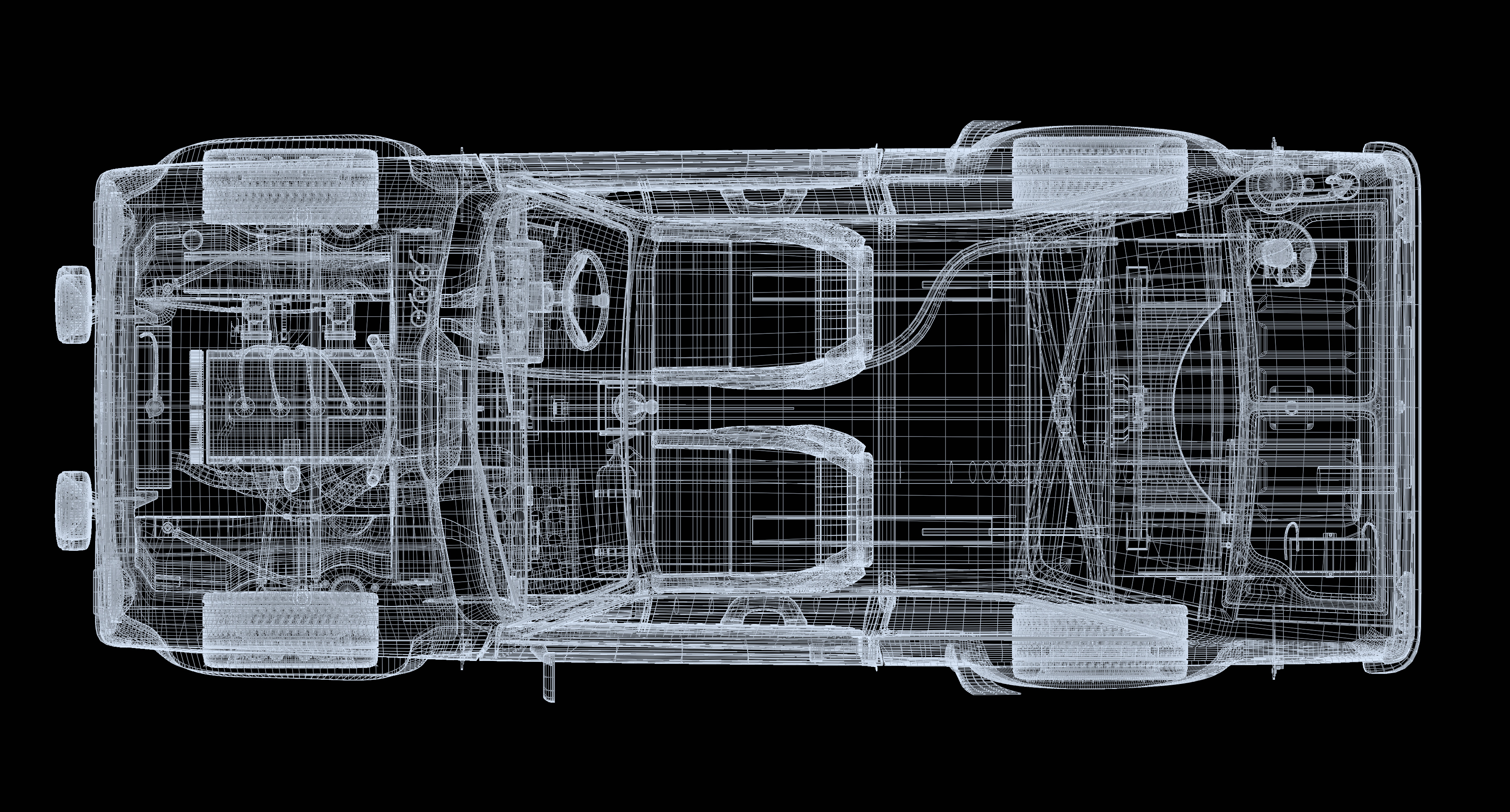Austin Ogonoski (Game Design Director)

Austin Ogonoski is Game Design Director at Straight4. He’s spent years racing and creating content for the sim racing community via his YouTube channel, and if there’s something he doesn’t know about the industry, it’s because it doesn’t exist. That experience of the community is why he believes it’s time to start making sims for race fans again …
First things first—you’re a real-world racer as well as a sim racer. Tell us a little about the real-world stuff?
AO: From a simulator standpoint, I prefer road racing. There's a greater diversity of cars and tracks, and a much bigger skill gap. As for real life, I race what’s affordable, and living in Canada, that means I do a lot of oval racing. I’m certainly not complaining about a 24-race schedule per year where the gate fee is $40, it’s easy to get your mates to sit in the grandstands for a few hours, and I’m home before midnight. A lot of sim racers get caught up in the fantasy of “Well, I’d never be caught dead in anything under GT4!” but come on, you also need to be realistic. I did a few years of late models and racing four or five times a season, at a massive financial loss even when I did finish on the podium and the car was in one piece, so in reality, you race what you can afford in real life. And that’s the beauty of sim racing: you get to race in cars that most of us will never afford in real life.
Being both part of the community and now seeing life from inside a studio, has your perception changed with respect to how games are built?
AO: It confirmed a lot of my suspicions, to be honest. I found it both interesting and horrifying to see how quickly a project could descend into the video game equivalent of Music From “The Elder”.
Racing games, and in particular racing simulators, are a very peculiar type of product. They’ve got an abnormally large hardcore following who are extremely well-versed in the sport. A lot of the audience have physically raced these cars, or they’ve had an uncle who turned wrenches on them, or a cousin who tried to climb the ladder but ran out of funding, or they themselves went to the “big race” at their local track as an integral part of their summer, dating back to their childhood.
It’s crucial that we listen and cater to these fans. They’re the ones buying and sinking long hours into games with a race car on the cover. Historically, when you stop making racing games for racing fans, or at least honour the unusually large group of hardcore users supporting these games, the title doesn’t do very well at all, commercially or critically.

Being a “fresh” face in game development, what do you think you bring to the studio in terms of new ideas and vision for what a sim racing title ought to be?
AO: Honestly, just the fact that I'm still young and binged on these games in my teens and twenties is a huge advantage. I’ve basically become a walking encyclopedia of virtual race cars over the past twenty-five years because this has been my main hobby for as long as I can remember.
So what do I bring? Years of physically buying racing games and playing the hell out of them. It’s the result of painting cars myself, of buying DLC and trying to determine if it was worth the money, of installing mods, of hotlapping, of racing against the AI on my own time (and becoming enraged by it!), of league racing, of finding force feedback tweaks, of messing with .INI files, of watching content creators, of making my own content, of figuring out exploit setups, and late night Discord discussions with other passionate sim racers about what these games were missing.
What’s it like seeing what you wrote in the Game Design Bible slowing becoming assets and features in a game that has just lived in your imagination for the months that you spent designing it?
AO: Very melancholic, actually!
The industry, in my opinion, has wasted a lot of time on features or functionalities that just weren’t appropriate for racing games or simulators. In all honesty, I feel like I just suggested natural ideas for a modern sim that someone else should have been able to come up with a lot sooner but for whatever reason didn’t.
Instead, we’ve been subjected to decades of mind-numbingly bizarre features and priorities across several generations of racing games and sims that did very little aside from alienating the very people who we should be making these games for. I mean, shipping a sim racing game without a rear-view mirror?! Just … what?!

Can you talk about your vision for the game?
AO: The goal is to make up for lost time, and aggressively drag our hobby into the modern era.
My childhood and early teenage years were spent fiddling around with games we now refer to as iconic, polished racing simulators. My teens were spent working retail hellscape jobs, pinching every penny to save up for the array of highly-anticipated console racers from big name studios, but it wasn’t quite the same. I distinctly remember the immeasurable disappointment of discovering many strange creative choices, and how racing games were seemingly being built for everybody but people who enjoyed racing games.
So eventually I switched to sim racing and let my console collect dust. And what I found was that, while yes, sims were impressive pieces of technology, they resembled all the bad parts of flight simulators a bit too much too. Between cars with inaccurate laptimes or weird handling oddities, being forced to swim through convoluted menus with endless toggle options, having to go into my router settings and port forward to host a race with my friends, or being unable to pick the color of my car before I drove in a simple online server, I kind of began thinking sim racing studios were selling science projects to people, not games.
Sitting around reading changelogs or theory-crafting about when your favourite car will finally get its long-awaited tyre model update isn’t what sim racing should be. It’s disrespectful to the passionate sim racing audience.
What’s on the drawing board at Straight4 then? Honouring the history of our industry, for starters. I asked myself, how are people playing these games now? How did people play these games, or invent ways to play these games that were so simple and yet so addictive, in the past? What kind of in-app functionality do sim racers genuinely need, and why are they missing? What’s a simple change to the game’s presentation, HUD, or UI, that is cool and streamlines the experience?
I’m a racer at the end of the day, so competition is in my blood, and I know I shouldn’t say this, but it all comes down to one thing: I want our competitors to be left wondering “Why the hell didn’t we do that?” and “Why the hell didn’t we think of that?”
You look back at history and ask the question, Who made the best racing sims? and you’ll come up with the same answer every time: seriously, there’s only one thing that connects all the great sims and that is, they were made by people who loved racing and who made the game they themselves wanted to play.
That’s what we’re building.
For any youngsters out there who are wondering how to get into this industry: any advice?
AO: Historically, most of the ultra-passionate guys in our industry eventually go on to do it professionally. Modders get hired for freelance work. Forum admins become licensing managers. Doesn’t matter what your end goal is, just get started. I’m here because I thought it would be more fun running a sim racing blog than watching a horrible NFL wildcard playoff game, and it set off what has now become an eight-year domino effect.







.png)

























